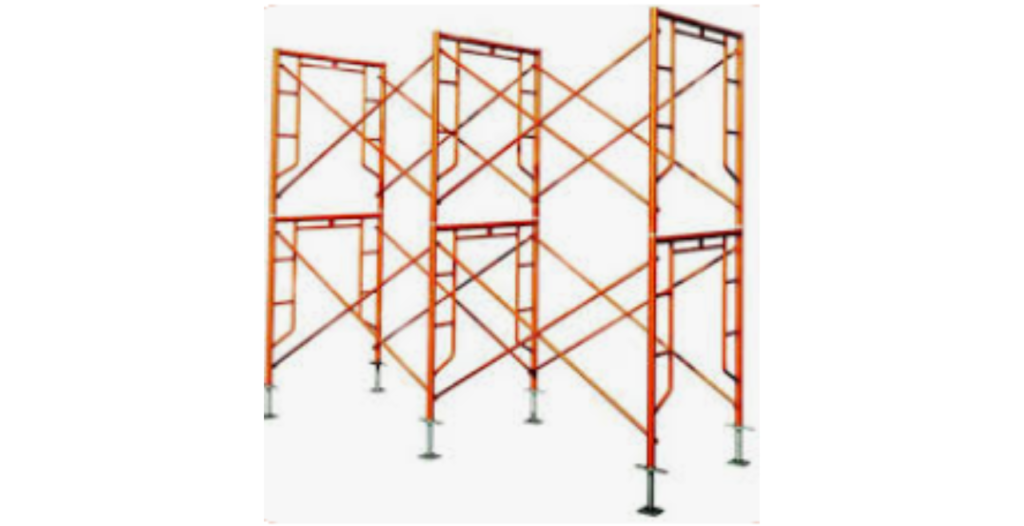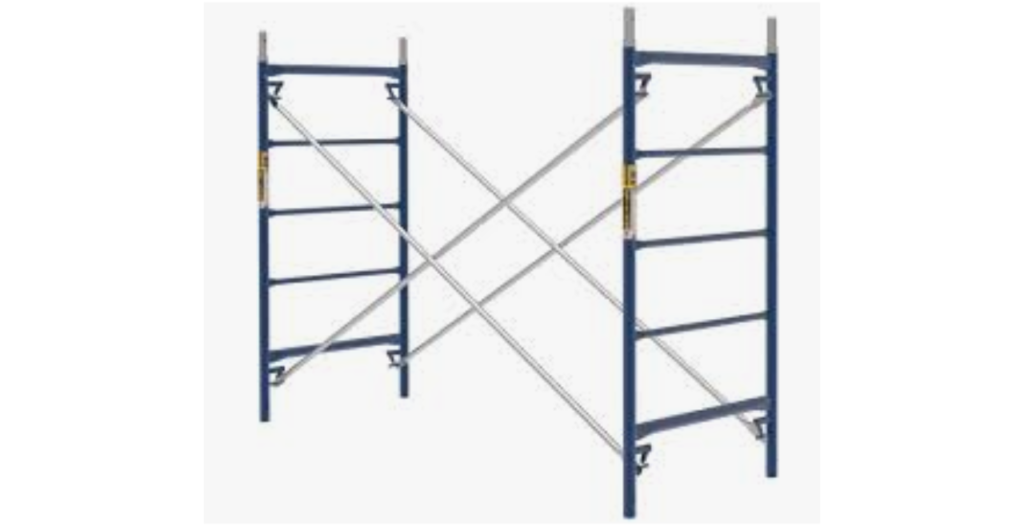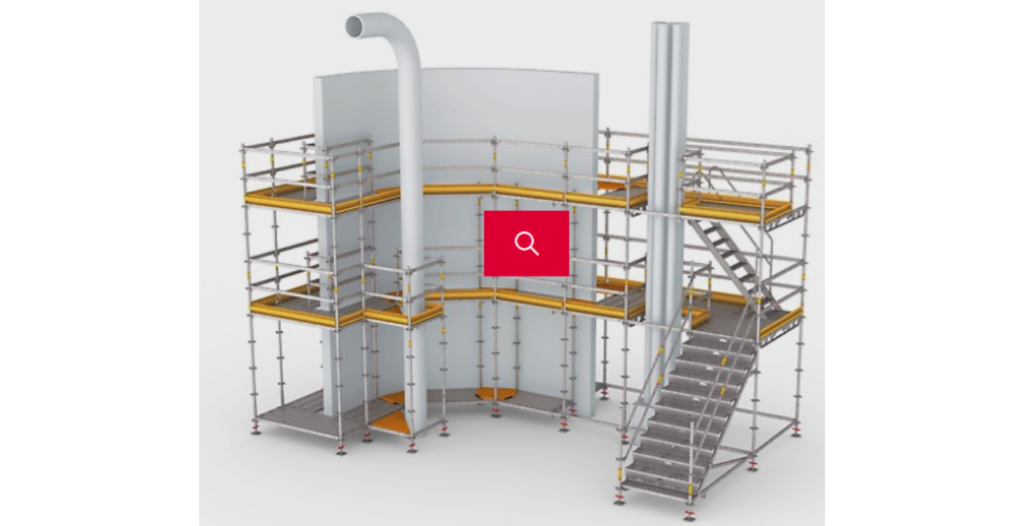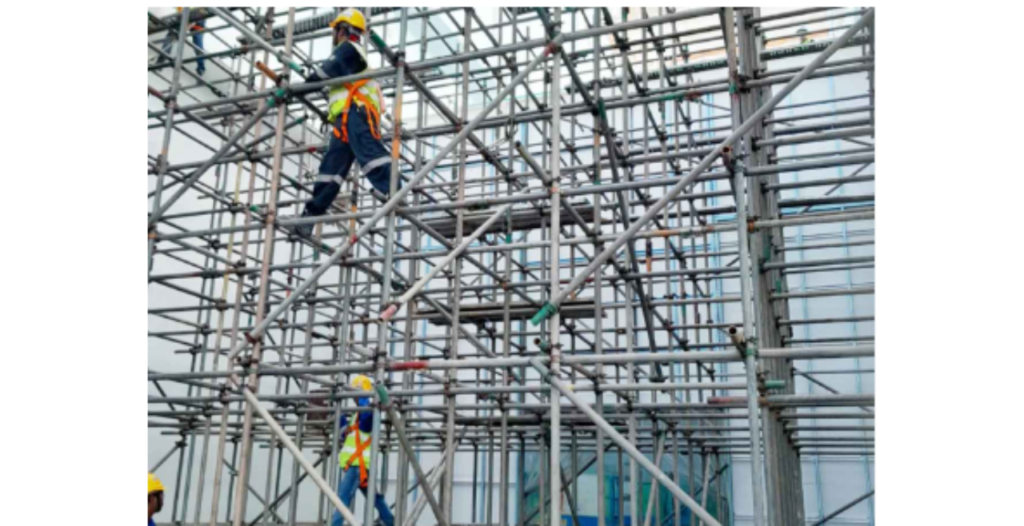CONSTRUCTIONS TECHNOLOGY & PRODUCTS
Scafoldings
Scaffolding is a temporary structure used in construction, maintenance, and repair projects to provide access and support for workers and materials at elevated heights. It plays a crucial role in ensuring the safety and efficiency of various construction tasks. In this detailed overview, we will discuss the key aspects of scaffolding, including its working principles, advantages, disadvantages, applications, materials of construction (MOC), and provide a summary. |
| 1. Working Principles: Scaffolding is designed with the following working principles: |
| Support and Access: Scaffolding serves as a platform to support construction workers, tools, and materials, allowing them to access work areas at different heights. |
| Stability: Scaffolding systems are erected with a stable framework that can withstand the weight of workers and materials without collapsing. |
| Adjustability: Scaffolds are adjustable to various heights, facilitating work on structures with different elevations. |
| Safety: Safety features such as guardrails, toe boards, and safety nets are incorporated to protect workers from falls. |
| Mobility: Some scaffolding systems are mobile or portable, enabling repositioning as work progresses. |


| 2. Advantages: |
| Safety: Scaffolding provides a safe working platform, reducing the risk of accidents and falls for construction workers. |
| Efficiency: It facilitates easy access to different parts of a building or structure, improving work efficiency and productivity. |
| Versatility: Scaffolding can be adapted to various project requirements and configurations, including straight, suspended, and mobile scaffolds. |
| Cost-Effective: It is a cost-effective solution for providing temporary access and support during construction, maintenance, and repair tasks. |
| Durability: High-quality scaffolding materials are designed to withstand harsh weather conditions and heavy loads. |

| 3. Disadvantages: |
| Cost: The initial cost of scaffolding materials and installation can be relatively high, especially for large projects. |
| Skilled Labor: Proper assembly and disassembly of scaffolding require skilled labor to ensure safety and stability. |
| Space Requirements: Scaffolding may require additional space around the construction site, impacting site logistics. |
| Maintenance: Regular inspection and maintenance are necessary to ensure scaffolding remains safe and functional. |
| Time-Consuming: Erecting and dismantling scaffolding can be time-consuming, potentially affecting project schedules. |


| 4. Applications: Scaffolding is used in a wide range of applications, including but not limited to: |
| Construction: For access and support during the construction of buildings, bridges, and other structures. |
| Maintenance and Repair: In maintenance work on existing structures, such as painting, cleaning, and repairs. |
| Renovation: During building renovations or remodeling projects. |
| Inspection: For structural inspections and assessments of bridges, towers, and industrial facilities. |
| Shipbuilding: In shipyards for building and repairing ships and offshore structures. |
| Events and Entertainment: Temporary platforms for events, concerts, and theater productions. |

| 5. Materials of Construction (MOC): Common materials used in scaffolding construction include: |
| Steel: Steel scaffolding is durable and suitable for heavy-duty applications. |
| Aluminum: Aluminum scaffolding is lightweight and corrosion-resistant, making it suitable for both indoor and outdoor use. |
| Wood: Wooden scaffolding is commonly used for smaller projects and is cost-effective. |
| Bamboo: In some regions, bamboo scaffolding is still used due to its availability and flexibility. |

| 6. Summary: Scaffolding is a crucial temporary structure in construction, maintenance, and repair projects, providing access, support, and safety for workers and materials at elevated heights. It operates based on principles of support, stability, adjustability, safety, and mobility. Scaffolding offers advantages such as improved safety, efficiency, versatility, cost-effectiveness, and durability, but it also has disadvantages related to cost, skilled labor requirements, space, maintenance, and time. It finds applications in various industries and projects, from construction and maintenance to renovation, inspection, shipbuilding, and entertainment events. Materials of construction, such as steel, aluminum, wood, or bamboo, are chosen based on project requirements. Proper assembly, inspection, and maintenance are essential for ensuring the safety and functionality of scaffolding systems. |


 Sales & Marketing:
Sales & Marketing:  Service Supports:
Service Supports:  Website:
Website: 